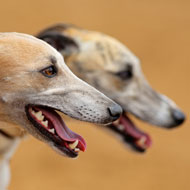Top ten list reveals how UK zoos help conservation
A report by the British and Irish Association of Zoos and Aquariums (Biaza) has revealed the top 10 mammals that are staving off extinction thanks to the help of zoo conservation efforts.
The Amur leopard, the Livingstone's fruit bat and the San Martin titi monkey are among the mammals that most rely upon UK and Irish zoos, according to the report.
Biaza's list aims to highlight some of the best examples of how zoos are safeguarding the future of our planet's wildlife and their habitats.
A similar list was released by the association last year, which instead revealed the top 10 species that are surviving because of zoos.
The selection was based upon strict criteria and had to be associated with current field initiatives by zoos, as well as listed as Endangered, Critically Endangered or Extinct in the Wild on the International Union for the Conservation of Nature's (IUCN) Red List of Threatened Species.
"It was a really tough choice this year as there were so many likely contenders," said Dr Andrew Marshall from Biaza's Field Programmes Committee, who compiled the list with the help of conservation experts at Biaza zoos.
"The Amur leopard was an obvious choice – with only around 50 wild leopards left, their future depends on funding and direct field involvement of zoos, who are currently planning what will be the first big cat reintroduction using cats bred in zoos."
Dr Marshall added that, when an outbreak of anthrax forced the Grevy's zebra to the brink of extinction, a consortium of international zoos acted rapidly to administer vaccinations on a large scale across northern Kenya.
Others listed as reliant upon zoo conservation were the blue-eyed black lemur, the Scimitar-horned oryx, the Sumatran tiger, the pied tamarin, the white-naped mangabey and the western lowland gorilla.
"Modern zoos are evolving and improving rapidly and increasingly are acting as the driving forces behind major conservation, research and education initiatives," continued Dr Marshall.
"We want our visitors to know that, in visiting their zoo, they are not simply enjoying a great day out, but are contributing to an ever-increasing conservation effort."
Image courtesy of Cris Jansen Piers/Biaza



 The Greyhound Board of Great Britain has published new vaccination guidance, with all greyhounds registered from 1 January, 2027 required to have the L4 leptospirosis vaccination, rather than L2.
The Greyhound Board of Great Britain has published new vaccination guidance, with all greyhounds registered from 1 January, 2027 required to have the L4 leptospirosis vaccination, rather than L2.